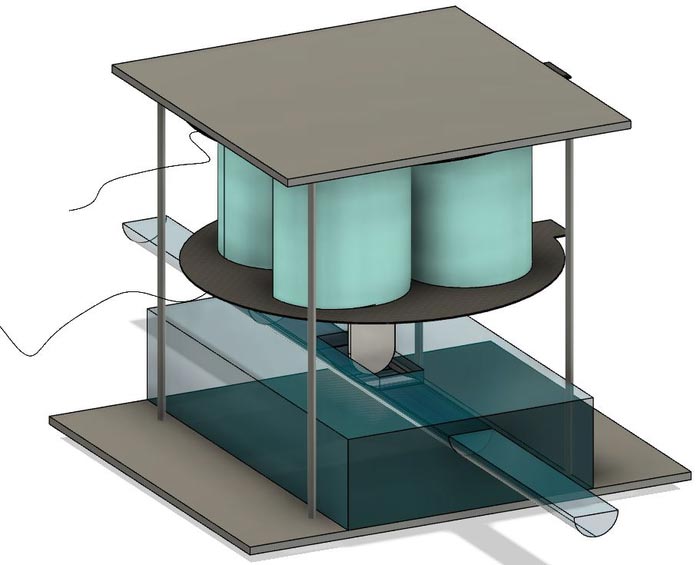Soft components for the next generation of soft robotics

An assembled soft dynamic DEA valve
Credit: Siyi Xu/Harvard SEAS
Soft valve paves the way for fully soft robots.
Soft robots driven by pressurized fluids could explore new frontiers and interact with delicate objects in ways that traditional rigid robots can’t. But building entirely soft robots remains a challenge because many of the components required to power these devices are, themselves, rigid.
Now, researchers from the Harvard John A. Paulson School of Engineering and Applied Sciences (SEAS) have developed electrically-driven soft valves to control hydraulic soft actuators. These valves could be used in assistive and therapeutic devices, bio-inspired soft robots, soft grippers, surgical robots, and more.
The research was published in the Proceedings of the National Academy of Sciences (PNAS).
“Today’s rigid regulation systems considerably limit the adaptability and mobility of fluid-driven soft robots,” said Robert J. Wood, the Harry Lewis and Marlyn McGrath Professor of Engineering and Applied Sciences at SEAS and senior author of the paper. “Here, we have developed soft and lightweight valves to control soft hydraulic actuators that open up possibilities for soft on-board controls for future fluidic soft robots.”
Soft valves aren’t new but so far none have achieved the pressure or flow rates required by many existing hydraulic actuators. To overcome those limitations, the team developed new electrically powered dynamic dielectric elastomer actuators (DEAs). These soft actuators have ultra-high power density, are lightweight, and can run for hundreds of thousands of cycles. The team combined these new dielectric elastomer actuators with a soft channel, resulting in a soft valve for fluidic control.
“These soft valves have a fast response time and are able to control fluidic pressure and flow rates that match the needs of hydraulic actuators,” said Siyi Xu, a graduate student at SEAS and first author of the paper. “These valves give us fast, powerful control of macro-and small-scale hydraulic actuators with internal volume ranging from hundreds of microliters to tens of milliliters.”
Using the DEA soft valves, the researchers demonstrated control of hydraulic actuators of different volumes and achieved independent control of multiple actuators powered by a single pressure source.
“This compact and light-weight DEA valve is capable of unprecedented electrical control of hydraulic actuators, showing the potential for future on-board motion control of soft fluid-driven robots,” said Xu.
The research was co-authored by Yufeng Chen, Nak-Seung Patrick Hyun, and Kaitlyn Becker. It was supported by the National Science Foundation and the National Robotic Initiative under award CMMI-1830291.
Journal: Proceedings of the National Academy of Sciences
Media Contact
Leah Burrows
Harvard John A. Paulson School of Engineering and Applied Sciences
lburrows@seas.harvard.edu
Office: 617-496-1351
Media Contact
All latest news from the category: Power and Electrical Engineering
This topic covers issues related to energy generation, conversion, transportation and consumption and how the industry is addressing the challenge of energy efficiency in general.
innovations-report provides in-depth and informative reports and articles on subjects ranging from wind energy, fuel cell technology, solar energy, geothermal energy, petroleum, gas, nuclear engineering, alternative energy and energy efficiency to fusion, hydrogen and superconductor technologies.
Newest articles

Innovative 3D printed scaffolds offer new hope for bone healing
Researchers at the Institute for Bioengineering of Catalonia have developed novel 3D printed PLA-CaP scaffolds that promote blood vessel formation, ensuring better healing and regeneration of bone tissue. Bone is…

The surprising role of gut infection in Alzheimer’s disease
ASU- and Banner Alzheimer’s Institute-led study implicates link between a common virus and the disease, which travels from the gut to the brain and may be a target for antiviral…

Molecular gardening: New enzymes discovered for protein modification pruning
How deubiquitinases USP53 and USP54 cleave long polyubiquitin chains and how the former is linked to liver disease in children. Deubiquitinases (DUBs) are enzymes used by cells to trim protein…



